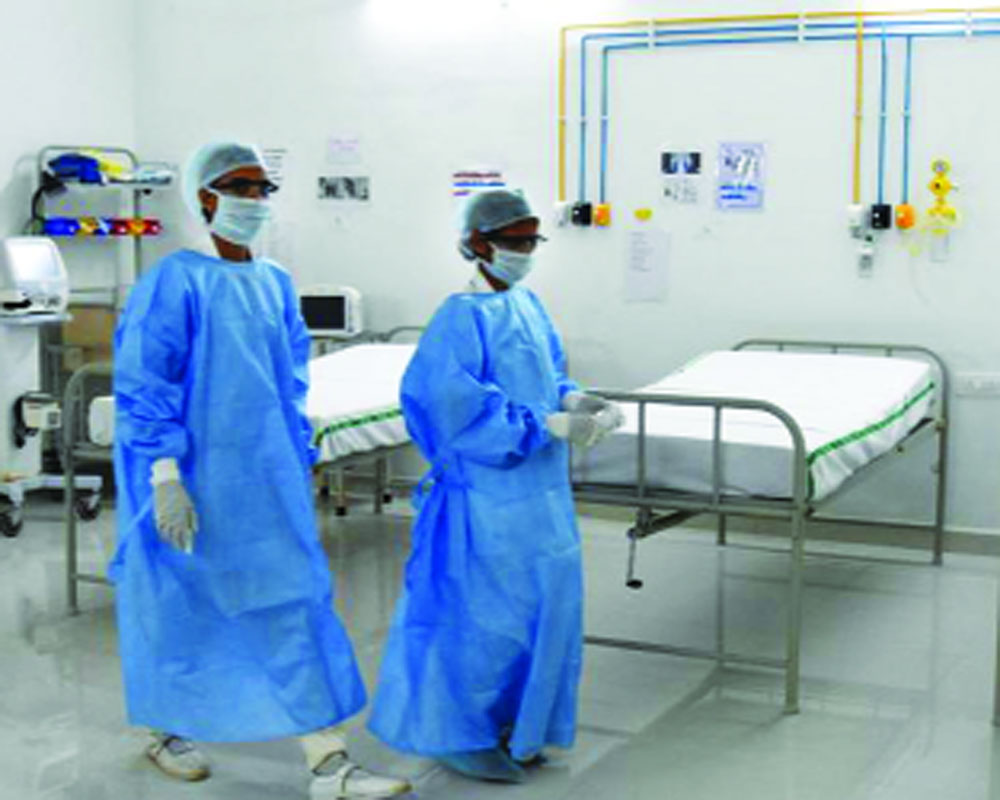With hospitals flooded as cases peak, we could at least avoid the kind of mismanagement that happened in Ahmedabad
As the positivity curve for COVID-19 takes a steep upward turn towards the dreaded peak, our hospital infrastructure is bulging under the pressure of admissions and the need for more intensive care. If reports are to be believed then ICU beds dedicated for critical cases are full in Mumbai and Delhi. So much so that now the Maharashtra Government has taken charge of 80 per cent of Mumbai’s private hospital beds while the Delhi Government has sought 20 per cent. Truth be told, the crisis has so far been managed by Government facilities, with 80 per cent of the cases entrusted in their care, and their frontline warriors have been waging a relentless battle with the virus without the requisite gear or devices at most times. Many private hospitals and clinics, in contrast, had scaled down operations because of the fear psychosis surrounding the virus. The few that were operating were already overcharging. The State Governments’ moves are expected to free up capacities to a large extent as we approach the dreaded swamp now that testing has become aggressive and chances of an early detection are ever so likely. But along with more beds and intensive care facilities, what is needed is a uniform adherence to protocol and protection of frontline doctors. As the whistleblower’s account of COVID care at the Ahmedabad Civil Hospital has revealed, instead of arresting the spiral, hospitals are becoming laboratories for the virus to multiply. Simply because they lack equipment and have no drill. In what can only be called a shocking negligence, all COVID patients at the Ahmedabad hospital were being managed by junior resident doctors, with no senior professor supervising them. Doctors on non-COVID duty were not given PPE kits, N-95 masks or proper gloves. Not even 10 per cent of the nearly 700 resident doctors, who stay in a common hostel, had been tested, making some of them dreaded carriers who were even attending to patients in non-COVID wards. Apparently, the senior doctors weren’t pushing for testing among residents, thinking they could battle the virus easily because of their age profile and if found positive after testing, would have to be withdrawn from duty rosters. In fact, it is this negligence that compelled the whistleblower to expose the management and treatment protocols and undergo tests voluntarily. And since he works in gynaecology and delivered babies while being positive, he was worried no contact tracing was done by the hospital. So imagine the risks associated with the pregnant women, new mothers and infants who were in his care and their families. Clearly, processes, no matter how well codified, will mean nothing if bungled and not implemented. Will every lapse need a media outcry and a High Court or Supreme Court ruling for course correction rather than staying on course? The least that is expected? While Government facilities are stretched beyond capacity, as they have been even during normal times, private hospitals, too, are quickly running out of ICU options. And while fatalities so far have been relatively on the lower side, the unpredictability of a swamp will pose a serious challenge in the days ahead.
Although we have ramped up arrangements, with private entrepreneurs setting up temporary facilities, endorsing research and rolling out ventilators, these are still piecemeal. No doubt policy re-orientation and increased health budgets will be a priority for the future but right now our healthcare system is fragile and extremely vulnerable to the virus that is spreading like wildfire across crowded urban areas and now with the migrant efflux, flooding the countryside. The States which export the most migrants to the rest of the country, namely Bihar and Uttar Pradesh, have among the lowest beds per person in the country and are woefully short of hospitals. It has been a humongous task for these States to ramp up testing centres in the first place. The lockdown allowed them to do that much and contain the flow of the virus. Just to understand the gravity of the situation, one has to compare the WHO figures for both India and the US. We have less than 0.8 doctors per 1,000 of the population while the latter is thrice ours. And according to Brookings Institute, we have 0.55 beds per 1,000 people while an equally densely populated China has around 4.2 beds. The same study estimates that we have 17,800 and 25,600 ventilators in ICU wards while the US has roughly between 150,000 and 200,000. Yet even that number fell short of dealing with the pandemic. As we balance economics with public health, the tussle may put us through the wringer over the next couple of weeks.


























